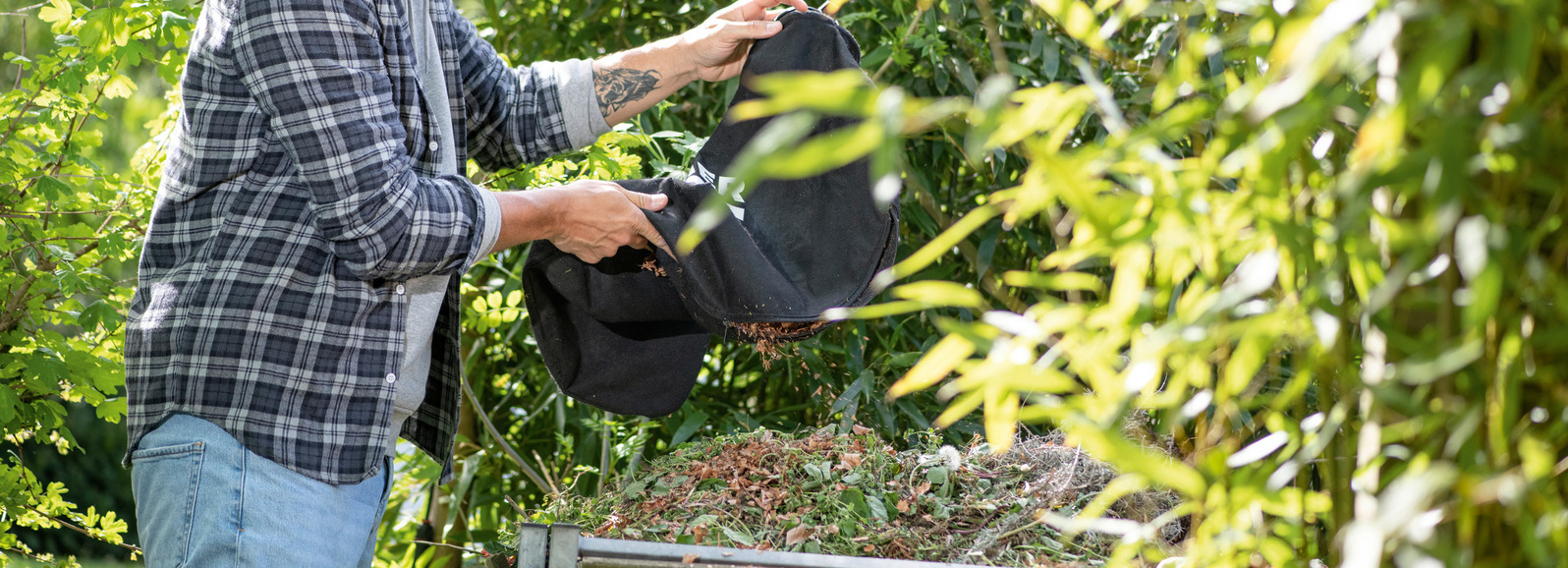Five tips for clearing daily leaves
Most trees and bushes shed their colourful leaves daily. When is it necessary to clear leaves on pavements, drives, lawns and in the garden? Particularly as sweeping leaves with rakes and brooms is often very laborious when dealing with larger areas. With these tips, garden owners can clear leaves in various areas quickly and efficiently.
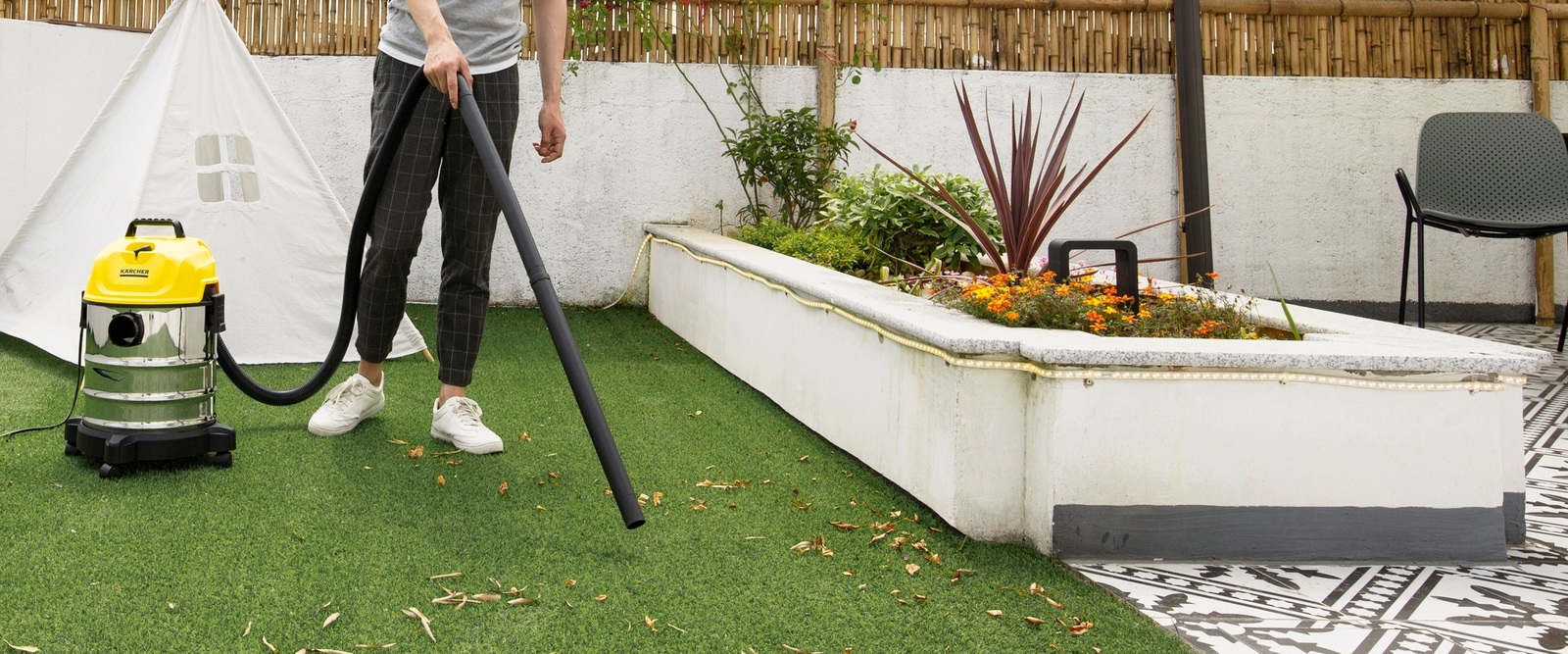
Tip 1: Where do you have to clear leaves?
Why do you have to clear leaves at all? In certain areas around the house, there is an obligation to remove leaves in many regions. Owners of plots of ground adjacent to pavements must remove the leaves, and can also pass on this obligation to their tenants. You should clear the leaves often enough to ensure that passers-by cannot slip. It is sensible to clear leaves from drives for the same reason, so that braking distances are not affected.
The exceptions in a garden are lawn areas. Anyone who values a well-maintained lawn should remove the leaves, because otherwise yellow spots will form where the grass is not getting any sunlight – depending on the thickness of the leaf layer. But clearing leaves with a lawn mower is not especially animal-friendly. A rake is more suitable, or, if you want to save energy, a wet & dry vacuum blower.
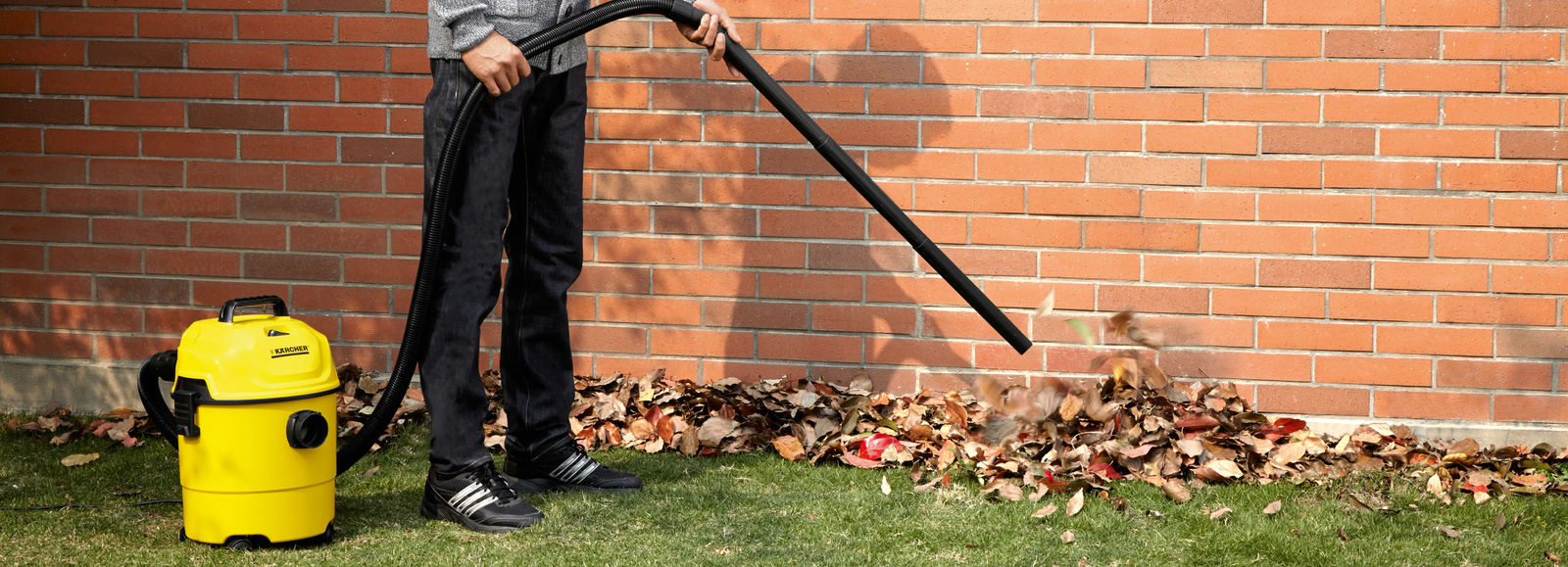
Tip 2: Clearing leaves with the wet & dry vacuum blower
Sweeping leaves with a rake or broom takes strength and time. Anyone who wants to remove leaves from pavements, drives and on the lawn faster and more easily should switch to a wet & dry vacuum blower. The strong air flow of the device manages to sweep leaves almost by itself, and also helps to remove leaves in difficult-to-access places and on flowerbeds or bark mulch.
With the Kärcher wet & dry vacuum blower, leaves can be swept in a targeted manner onto a heap. An additional scraper edge also loosens wet leaves or compacted dirt. Leaves can hereby be carefully removed from gravel, and you can get started on the pavement and lawn with greater power. Thanks to the removable blow tube, Kärcher wet & dry vacuum blower can be stowed so that they save space.
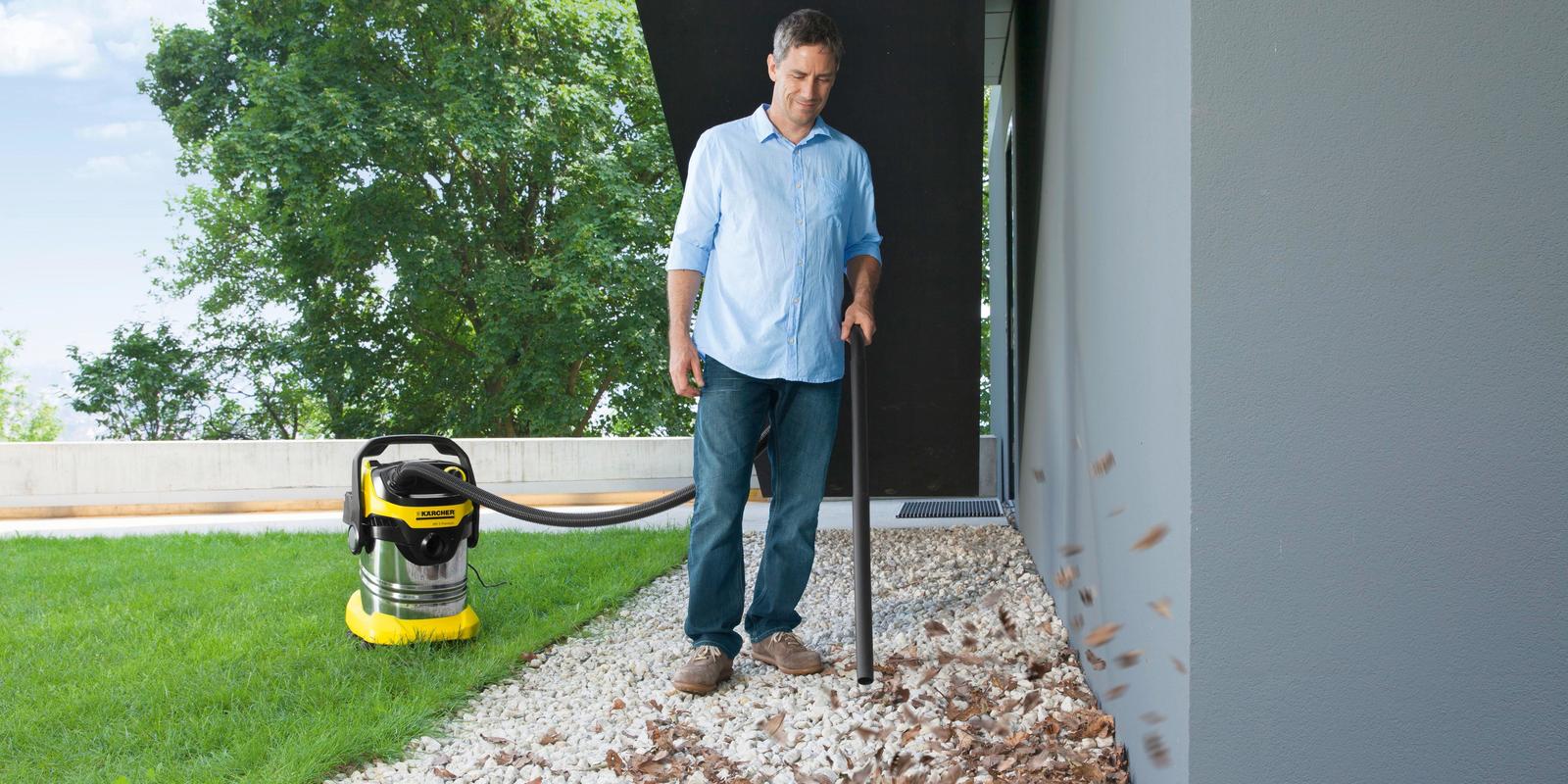
Clever combination: Wet & dry vacuum cleaner with blower function
Anyone who wants to remove leaves from larger areas and otherwise values an active aid for clearing up the yard and garden is ideally equipped with a Kärcher wet & dry vacuum cleaner. With its suction function and high tank capacity, it also helps to collect leaves. If needed, emptying the vacuum tank ensure a reduced device weight.

More than sweeping leaves: Multi-talented wet & dry vacuum cleaner
If leaf removal is achieved, wet & dry vacuum are far from calling it a day. They can be used in the house, in the yard and in the garden. A few examples:
- Blowing together and sucking up bush and hedge cuttings
- When weeding, collecting the removed weeds
- Picking up the cuttings left behind from mowing the lawn
- Blowing together and sucking up dirt on patios and in garages
- Removing wilted leaves and blossoms from beds
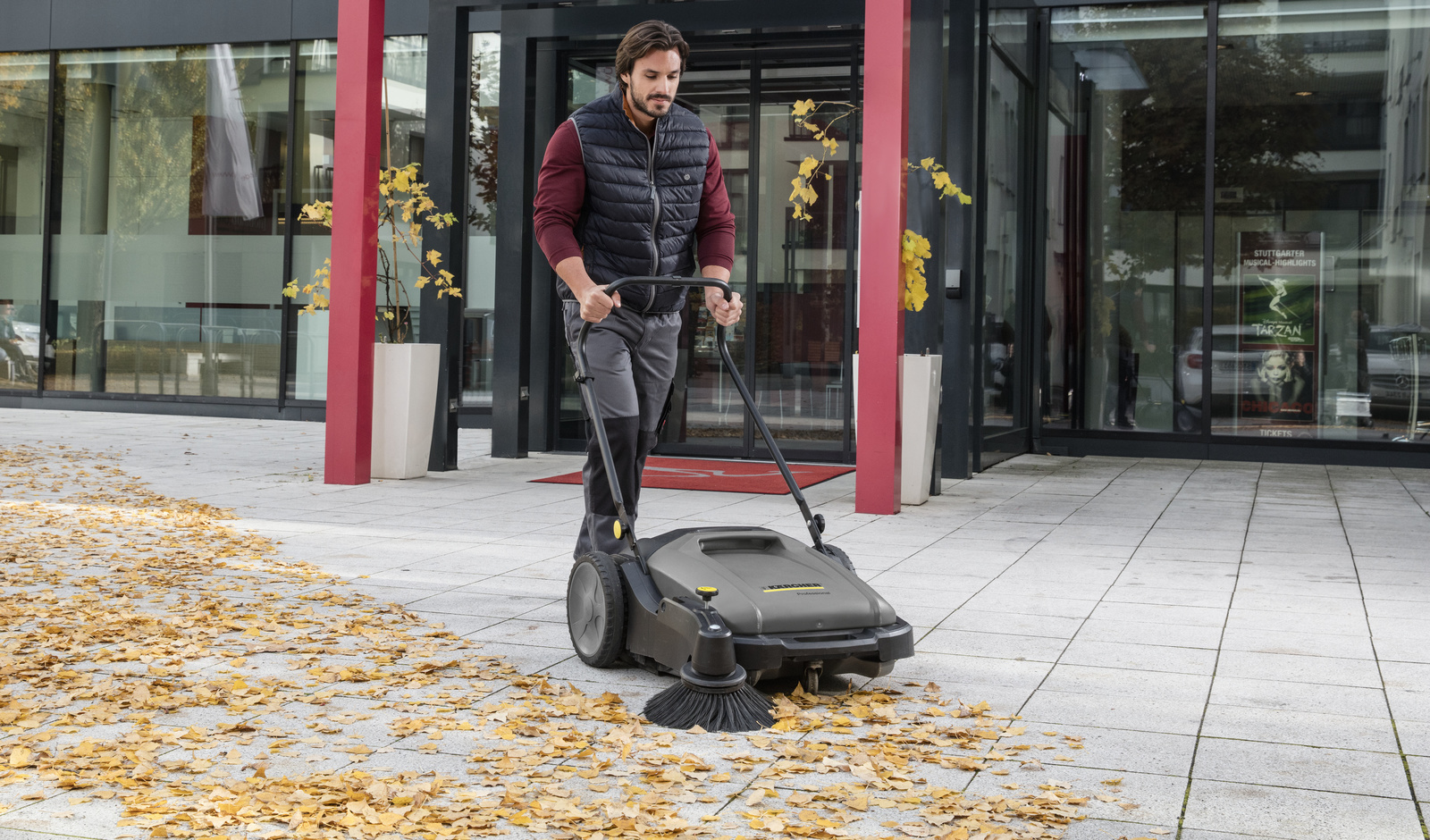
Tip 3: Sweeping leaves in larger areas with the sweeper
Sweeping leaves with brushes and rakes means that they also have to be collected later. But in the meantime, the autumn wind gets into the heaps of leaves and scatters the leaves again. Ideally, therefore, you should do both in one operation, i.e. sweep and collect leaves with one device, a sweeper.
Sweeper are especially suitable for paved areas such as pavements, drives or streets, and remove leaves and dirt without bending over thanks to the height-adjustable push handle and simply by moving the device. The waste container offers lots of space and can be emptied in just a few steps. The side brushes of the sweeper allows edges, crevices and corners to be cleaned too. With the KM70/20C manual sweeper, even wet leaves are no problem. The side brushes are fitted with harder bristles and so sweep without difficulty even in damp areas.
Sweepers are used the whole year round – sweeping leaves, sweeping pollen and blossoms together. And after the work's been done? Simply push the foldable push handle forwards and stow the sweeper upright in a shed, garage or basement so as to save space.
Tip 4: Removing leaves from pipes
Anyone who has trees near their house knows that leaves, small branches and dirt collect in downpipes. Here too, you should regularly remove dirt and leaves, so that rain water drains in the desired manner and so that water damage can be avoided. If dirt has settled in the first place, removing it is a time-consuming and laborious matter. Downpipes can be effortlessly cleaned with Kärcher's Pipe Cleaning Kit, suitable for Kärcher high-pressure cleaners.
The downpipes and waste water pipes can be relieved of blockages with pipe cleaning kits. The high-pressure with a special pipe cleaning nozzle is used, which uses the recoil of the water stream directed backwards to penetrate into the blockage from leaves and other dirt, and rinses the downpipe clear again. Tip: The hose of the pipe cleaning kit has a red safety marking. The hose should always be guided into the pipe at least up to this marking and the cleaning process stopped as soon as the marking can be seen again when pulling the hose out. This way, you are protected from water spraying backwards, as well as from potential dangers due to a high-pressure hose spinning around.
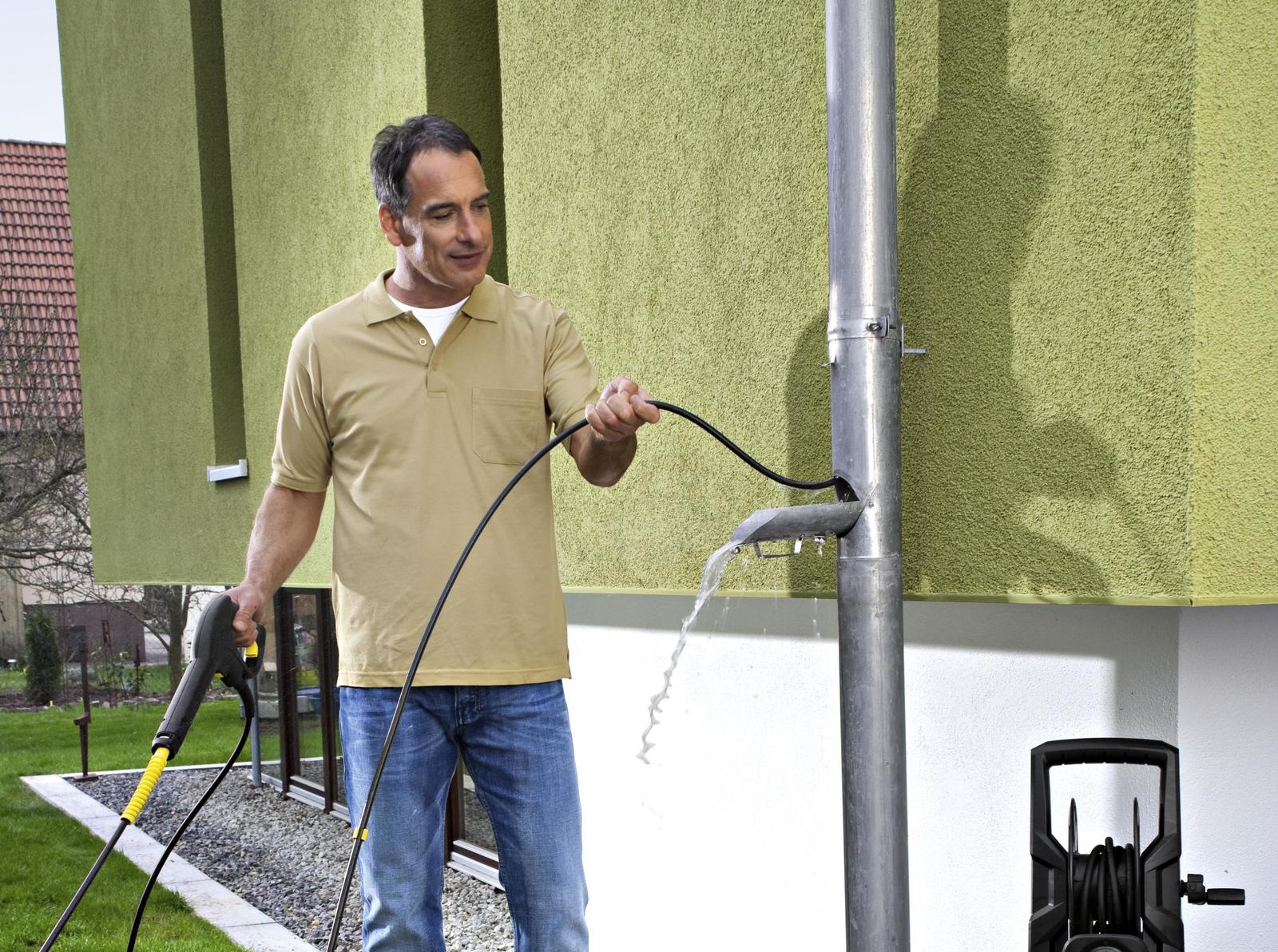
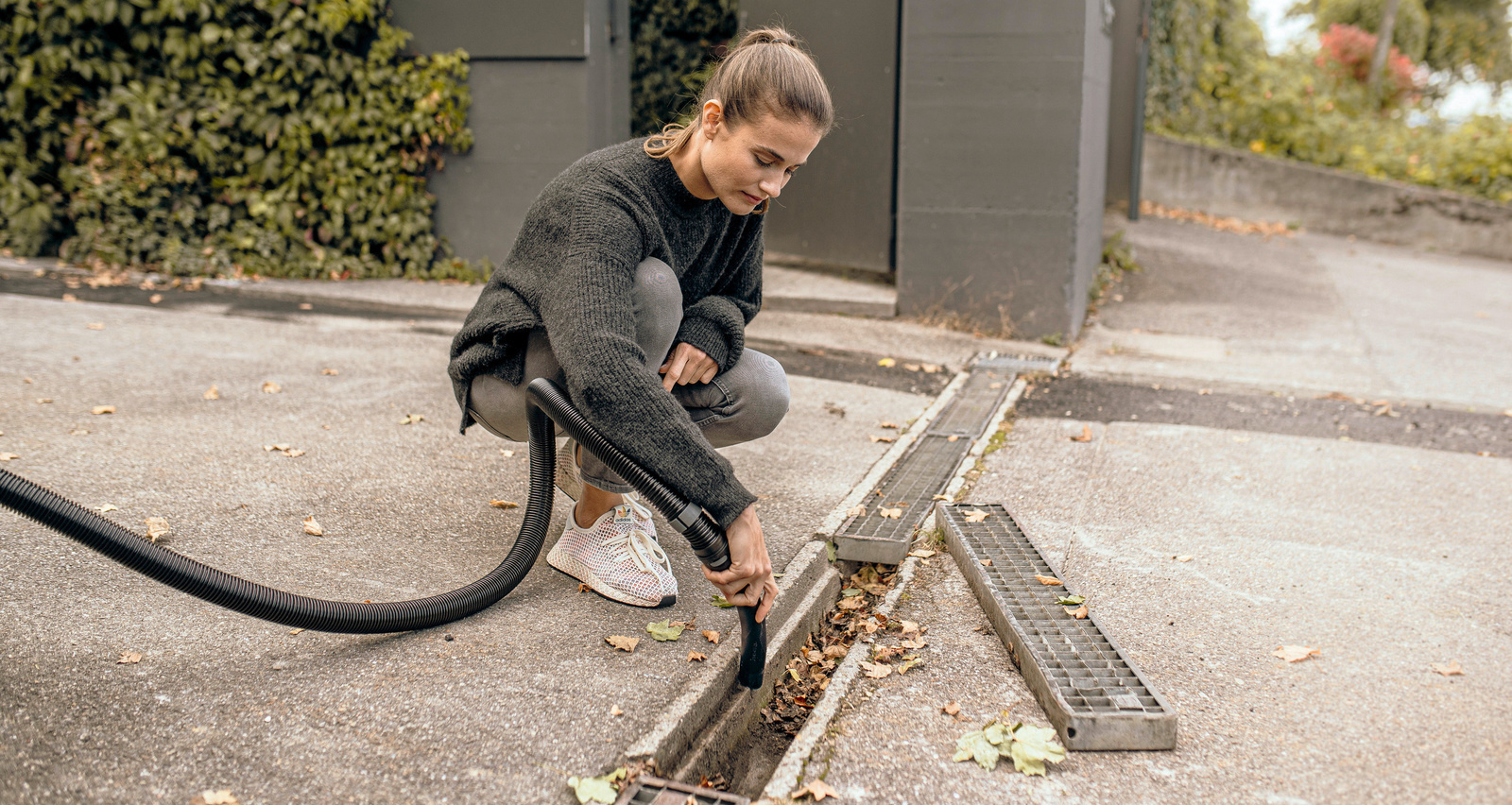
Tip: Cleaning light shafts and drainage channels
Over time, leaves and loose dirt also settle in light shafts and drainage channels around the house, and should likewise be removed at regular intervals. Both wet and dry dirt can be quickly and effortlessly sucked in with a wet and dry vacuum cleaner. Many devices also have a blower function, which turns out to be especially practical, particularly in places that are difficult to access.
Tip 5: Where should the leaves go? Exemplary disposal
Thanks to wet & dry vacuum and sweeper, it is easy to sweep and pick up leaves. But where should they go if you don't have your own compost heap? You can dispose of smaller quantities of leaves and green waste in your organic waste bin, but they fill up quickly on plots of ground with many trees. In some regions, municipalities offer special sacks or baskets that are placed on the roadside when full and then disposed of. Otherwise, you need to make the journey to the garden cuttings collection point of the nearest recycling centre.
Sweeping leaves for bonfire? Burning leaves and garden cuttings is prohibited in many municipalities or greatly restricted in terms of the time of year. Justifiably, as even withered leaves still contain enough water that smoke and unwelcome odours can develop when they are burned. Fine dust can likewise be released. So remove leaves in the household waste? Just not in rubbish bins and recycling bins – these may not be emptied if they are filled incorrectly. So – leaf bag, recycling centre or compost.
